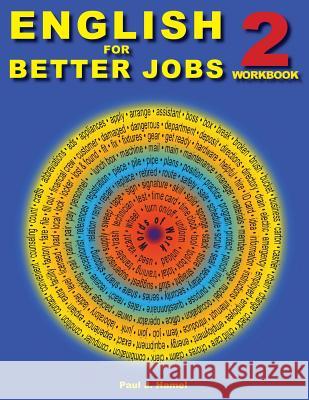English for Better Jobs 2: Language for Work and Living » książka
English for Better Jobs 2: Language for Work and Living
ISBN-13: 9781537605227 / Angielski / Miękka / 2016 / 294 str.
English for Better Jobs is a three-book workbook series designed for adult English learners who plan to enter the workforce. It presents the grammar, vocabulary, and language skills necessary for entry-level employment as well as getting along in an English-speaking environment. While students are learning basic English language skills in a mostly work-related context, they practice all four language skills: listening, speaking, reading, and writing. This series does not focus on academic goals and interests. Workbook 2 has been designed for "launched beginners" who have mastered basic literacy skills in reading and writing. The workbooks are divided into chapters and units with common themes: a classroom, a work shop, a store, a party, and the like. Within each chapter, each unit carefully integrates grammatical structures with practical vocabulary and every-day expressions in useful situations. The series aims at simplicity. The simple, clear page design is in black and white with large type and simple cartoon illustrations that allow students to concentrate on the lesson rather than be overwhelmed with crowded and complicated page layouts that may distract. The illustrations are timeless and help minimize the use of outdated photos, fashions, and current events. Each page measures 8 1/2 by 11 inches and is ideal for making photo copies or when using an overhead projector. Detailed teaching notes provide step-by-step explanations on how to present the lessons. The workbook is designed to be used in tutoring situations or in small group instruction. However, it can be used with larger groups, too. Although most exercises are self-explanatory, teaching notes at the back of the workbook give suggestions for class presentations and additional activities. After opening with a class discussion and conversation that presents the topic and useful vocabulary, a reading passage or dialog is read aloud by the instructor so students can practice listening skills. Then, the students read the text and answer questions in the "Understand" section. Next, students practice student-centered oral activities such as pair or group practice. This is followed by a grammar component is presented with additional oral practice. "Challenge" activities are sprinkled throughout the series to provide students with the opportunity to go beyond the material presented. Finally, varied written exercises, dictations, and short quizzes are presented in as natural a context as possible. The lessons recycle grammatical structures again and again, with review and new vocabulary in changing contexts. Survival and work-related vocational skills are carefully balanced. Most of the vocabulary presented in work-related situations is also applicable in other real life contexts.
Zawartość książki może nie spełniać oczekiwań – reklamacje nie obejmują treści, która mogła nie być redakcyjnie ani merytorycznie opracowana.











